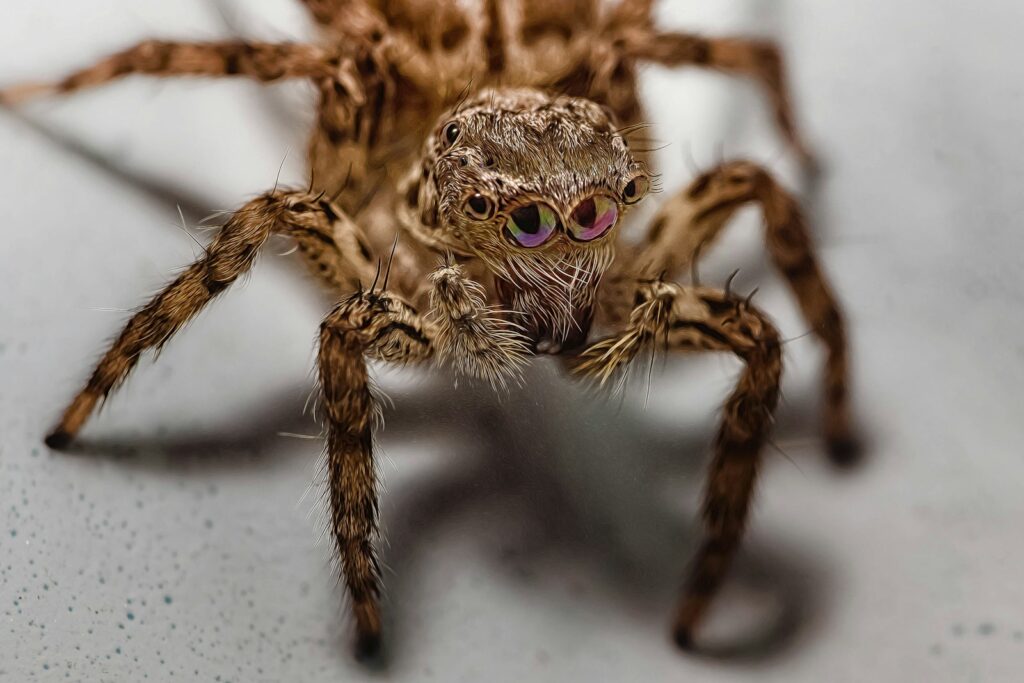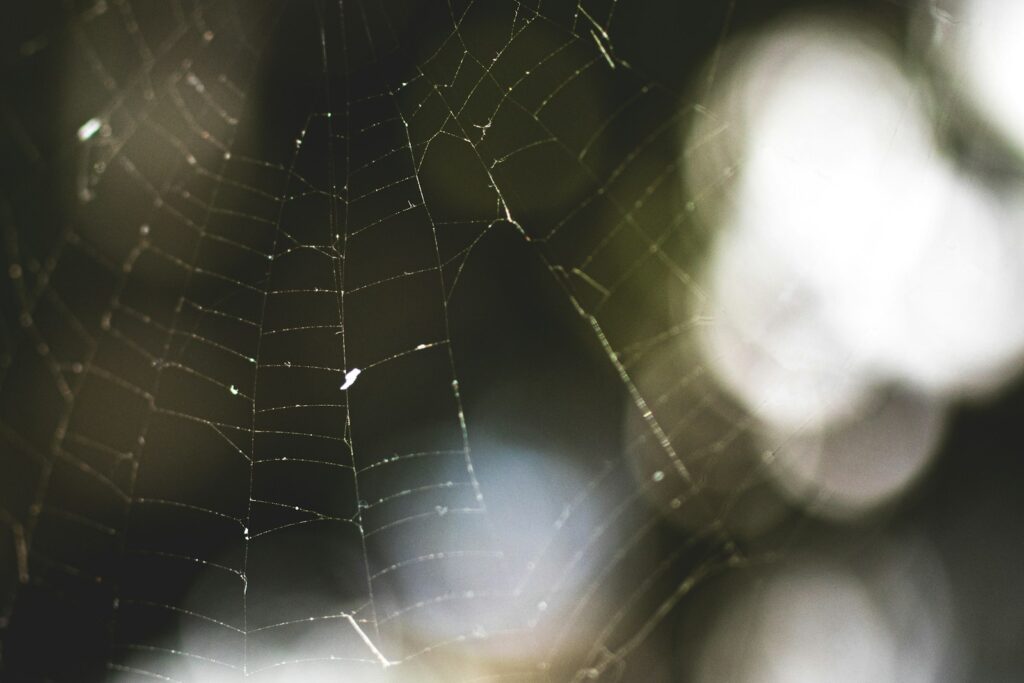In the intricate world of arachnids, certain species stand out for their remarkable adaptations. Among these, the birdcatcher spider – specifically members of the Nephila genus – has developed an extraordinary ability to blend into its surroundings using its own silken creations. Unlike their venomous cousins that rely on toxins for defense and hunting, these fascinating spiders have evolved an alternative strategy: camouflage within their own architectural masterpieces. This adaptation not only helps them avoid predators but also makes them more effective hunters. Their web-based camouflage represents one of nature’s most elegant solutions to survival, combining artistry with functionality in a way that continues to captivate both casual observers and dedicated arachnologists alike.
The Master of Disguise: Introducing the Birdcatcher Spider

The birdcatcher spider, belonging to the Nephila genus (commonly known as golden orb-weavers), represents one of nature’s most skilled camouflage artists despite lacking venom potent enough to harm humans. These spiders can grow quite large, with females reaching leg spans of up to 4-5 inches, making them among the largest web-building spiders in the world. Their bodies typically feature striking yellow or golden patterns on backgrounds ranging from silvery-gray to rich brown, which might seem conspicuous until you observe how these colors interact with their distinctive webs. Most remarkably, these spiders have evolved the ability to alter their appearance and web structure to match their surroundings, creating a comprehensive camouflage system that few predators can penetrate.
The Science Behind Spider Camouflage

Spider camouflage operates on multiple sophisticated levels that demonstrate the evolutionary ingenuity of these creatures. Unlike simple color matching found in some animals, the birdcatcher spider employs both structural and pigmentation techniques to achieve near-invisibility. The spider’s exoskeleton contains specialized cells called chromatophores that can expand or contract to reveal different pigments, allowing for limited color adjustment based on surroundings. Additionally, the microscopic structure of their exoskeleton creates light-scattering effects that help them blend with the changing light conditions throughout the day. This complex system allows them to appear nearly transparent in some lighting conditions while maintaining the structural integrity needed for their predatory lifestyle.
The Golden Web: A Masterpiece of Natural Engineering

The signature golden web of the Nephila spider serves as both home and hunting ground, but its color serves a crucial camouflage function often overlooked by casual observers. The distinctive yellow-golden hue comes from specialized proteins in the silk combined with unique spinning techniques that incorporate light-refracting properties. When sunlight filters through forest canopies, these golden threads blend remarkably well with dappled sunlight, becoming nearly invisible to both prey and predators. The web’s size can be impressive, sometimes spanning several feet in diameter, yet remaining almost invisible until catching the light at specific angles. This natural engineering marvel demonstrates how functional adaptations can evolve alongside aesthetic properties to create multi-purpose structures.
Web Decoration: The Strategic Art of Distraction

Perhaps the most fascinating aspect of the birdcatcher spider’s camouflage strategy involves deliberate decorations added to their webs, known scientifically as “stabilimenta.” These decorations consist of densely woven silk patterns, often in zigzag or spiral formations, strategically placed throughout the web. While scientists initially believed these structures merely strengthened the web, research now suggests they serve multiple camouflage functions. The stabilimenta create visual barriers that break up the spider’s outline when it sits at the web’s center. They also reflect ultraviolet light in patterns that either appear warning-like to predatory birds or mimic natural elements like dappled sunlight through leaves. Some decorations even incorporate debris, dead prey, and egg sacs to further disguise the web’s true purpose.
Adapting to Various Environments

The remarkable adaptability of the birdcatcher spider enables it to thrive across diverse habitats ranging from tropical rainforests to suburban gardens. In forest environments, their webs often incorporate greenish silk strands that blend with surrounding foliage, while urban specimens may develop grayish tones matching building materials. This environmental responsiveness extends beyond simple color matching to include strategic web placement that takes advantage of natural light patterns. Researchers have documented these spiders rebuilding their webs in different locations based on seasonal changes in sunlight patterns and vegetation density. This environmental awareness demonstrates a level of behavioral sophistication that complements their physical camouflage abilities, creating a comprehensive survival strategy.
The Hunter Becomes Invisible: Predation Techniques

The camouflage abilities of the birdcatcher spider directly enhance its hunting effectiveness through a strategy best described as “hide in plain sight.” When prey approaches, the spider remains perfectly still at the web’s center or hub, where its patterned body breaks up its outline against the similarly colored web structures. Some species position themselves on special silk platforms slightly removed from the main web, connected only by sensitive trigger threads that alert them to entangled prey. Their leg positioning often mimics the stabilimenta patterns, further disguising their presence until the critical moment. Most impressively, some individuals can adjust their hunting positions based on weather conditions and time of day to maintain optimal camouflage effectiveness while maximizing prey capture potential.
Evolutionary Development of Web Camouflage

The evolutionary pathway that led to the birdcatcher spider’s remarkable camouflage abilities represents millions of years of natural selection favoring increasingly sophisticated survival strategies. Fossil evidence suggests web-building spiders have existed for at least 100 million years, with camouflage strategies developing gradually as birds and other visual predators emerged as significant threats. The ability to produce differently colored silk strands likely began as a random mutation that proved advantageous, leading to further specialization. Modern genetic analysis reveals specific genes controlling both silk coloration and the behavioral patterns required for strategic web decoration. This evolutionary history demonstrates a fascinating arms race between predator and prey detection systems, with each advance in visual hunting countered by more sophisticated camouflage techniques.
Predator Avoidance: Hiding from Threats

Despite their impressive size and formidable appearance, birdcatcher spiders face numerous predators including birds, lizards, wasps, and larger spiders, driving the evolution of their sophisticated camouflage system. When threatened, these spiders employ multiple defensive strategies beginning with their baseline camouflage that makes them difficult to detect initially. If disturbed, many species can rapidly shake their webs in a oscillating pattern that makes their already camouflaged bodies even harder to target accurately. Some individuals maintain escape lines – special silk threads that allow immediate retreat to shelter if danger approaches. Perhaps most impressively, certain species create “decoy” body shapes from bundles of silk and debris positioned strategically around their webs to draw predator attacks away from their actual location.
Scientific Research and Discoveries

Research into the birdcatcher spider’s camouflage capabilities has accelerated in recent decades, yielding fascinating insights with potential applications beyond arachnology. Studies using spectrophotometry have revealed that their silk reflects light wavelengths in patterns that disrupt normal visual processing in both insect and vertebrate visual systems. Biomimicry researchers have studied the molecular structure of their color-changing abilities, seeking applications in materials science for creating color-adaptive fabrics and surfaces. Recent discoveries suggest these spiders may also incorporate specialized compounds into their silk that reduce its visibility in ultraviolet light, which many insects can see but humans cannot. This ongoing research continues to reveal new layers of sophistication in what initially appears to be a simple camouflage strategy.
Human Applications: Learning from Spider Silk

The remarkable properties of the birdcatcher spider’s camouflage web have inspired numerous applications in human technology, spanning multiple industries. Military designers study these spiders’ ability to create visually deceptive structures when developing next-generation camouflage materials that can adapt to different environments. The light-manipulating properties of their silk have influenced developments in optical technologies, including anti-reflective coatings for solar panels and cameras. Medical researchers investigate the biocompatibility and strength-to-weight ratio of the silk for potential use in surgical sutures and scaffolding for tissue regeneration. Perhaps most promising are applications in sustainable manufacturing, where scientists hope to replicate the spider’s ability to create strong, flexible materials at ambient temperatures without harmful chemicals.
Conservation Status and Ecological Importance

Despite their remarkable adaptations, many birdcatcher spider species face increasing threats from habitat loss, pesticide use, and climate change affecting their delicate ecological niche. These spiders play crucial roles in controlling insect populations, with a single web capable of capturing hundreds of insects daily, including agricultural pests and disease vectors like mosquitoes. Their intricate webs also serve as microhabitats for numerous other invertebrates, creating mini-ecosystems within forest environments. Conservation efforts increasingly recognize these ecological contributions, leading to targeted protection programs in some regions where their populations have declined dramatically. Scientists monitor these populations as sensitive bioindicators of ecosystem health, as their specialized nature makes them particularly vulnerable to environmental disruptions.
Myths, Misconceptions, and Cultural Significance

Throughout human history, the birdcatcher spider has featured prominently in cultural narratives, often misunderstood due to its impressive size and striking appearance. Contrary to widespread belief, these spiders pose virtually no threat to humans, lacking both the temperament and venom potency to cause significant harm. Various cultures have interpreted their golden webs differently – some indigenous Australian groups considered them symbols of wisdom and creative potential, while certain African traditions viewed them as protective spirits guarding against evil. Western literature frequently mischaracterized them as dangerous or sinister until recent scientific understanding clarified their ecological benefits. Modern education efforts increasingly focus on dispelling these myths and fostering appreciation for these remarkable creatures, emphasizing their sophisticated adaptation strategies rather than unfounded fears.
Observing and Appreciating These Remarkable Architects

For those interested in witnessing the birdcatcher spider’s camouflage abilities firsthand, certain observation techniques yield the most rewarding experiences while respecting these creatures’ sensitive habitats. Early morning visits to forest edges often provide the best viewing opportunities, when dew highlights the normally invisible web structures and the rising sun creates the golden glow that gives these spiders their common name. Binoculars or macro photography equipment allow close observation without disturbing the spiders or their elaborate structures. Citizen science projects increasingly invite casual observers to document sightings, contributing valuable data to research on distribution patterns and habitat preferences. These observation opportunities offer windows into one of nature’s most sophisticated camouflage systems, demonstrating evolution’s creative solutions to the challenges of survival.
Conclusion

In conclusion, the birdcatcher spider represents one of nature’s most compelling examples of non-venomous defense adaptation. Through its remarkable ability to create and utilize camouflaged webs, this arachnid has developed a survival strategy that relies on visual deception rather than toxic deterrents. From the molecular structure of its color-changing silk to the strategic placement of web decorations, every aspect of its existence demonstrates evolutionary refinement toward perfect concealment. As scientists continue to unravel the complexities of these adaptations, we gain not only greater appreciation for these often misunderstood creatures but also inspiration for human technologies that might benefit from millions of years of natural engineering. Perhaps most importantly, understanding these sophisticated camouflage strategies reminds us of the intricate connections between form, function, and environment that characterize Earth’s most successful species.

